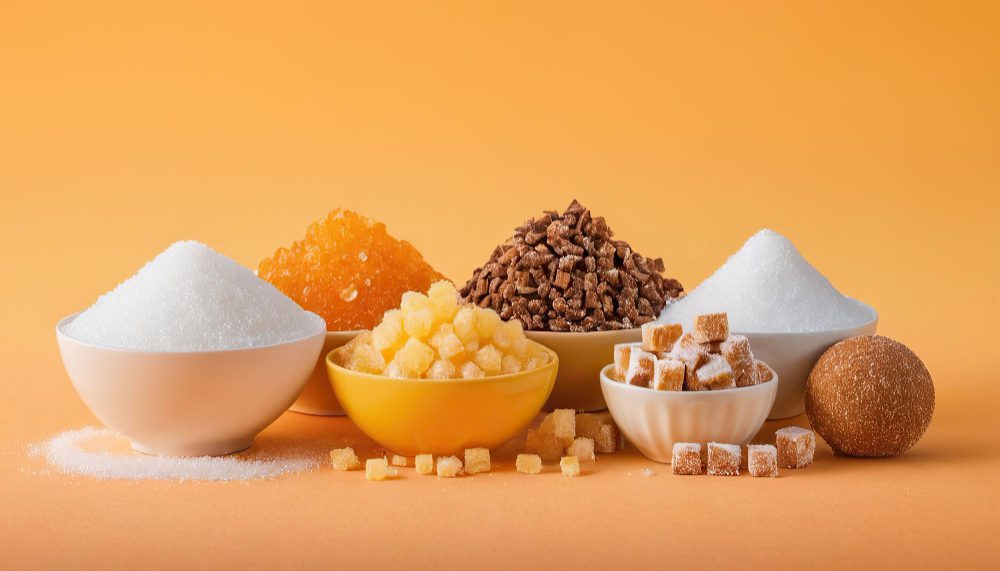A Quick Takeaway
The Story Behind the Trend
How to Make It Work for You
The Community View
Many health-conscious individuals across Florida, striving to make better dietary choices, often find themselves unknowingly consuming excessive amounts of sugar, even when selecting items labeled as “healthy.” Hidden sugars, cleverly disguised under various names on ingredient lists, permeate a vast array of processed foods, from seemingly innocent yogurts and granola bars to savory sauces and salad dressings. This pervasive issue contributes significantly to the rising rates of chronic conditions like obesity, type 2 diabetes, and heart disease, undermining the very efforts people make to improve their well-being. Understanding where these sugars lurk and how to identify them is crucial for anyone looking to truly take control of their nutritional intake and foster a genuinely healthy lifestyle.
The Deceptive Nature of Hidden Sugars
Hidden sugars are essentially any form of sugar added to food products during processing that consumers might not immediately recognize as sugar. Food manufacturers often use a multitude of different names to list sugar on ingredient labels, making it challenging for the average shopper to identify its presence and quantity. This practice can lead to a false sense of security when choosing products marketed as “natural,” “light,” or “low-fat,” which often compensate for reduced fat content with increased sugar.
The problem extends beyond just the obvious culprits like sodas and candies. These sugars are frequently found in products that don’t even taste particularly sweet, such as breads, crackers, and even some pre-packaged meats. Their inclusion often serves multiple purposes for manufacturers, including enhancing flavor, acting as a preservative, adding texture, or browning food more effectively. For consumers, however, this means a steady, often unwitting, intake of empty calories that can have detrimental health consequences.
Health Implications of Excessive Sugar Intake
Consuming too much added sugar has profound negative effects on the body, far beyond just weight gain. Regular high sugar intake can lead to insulin resistance, a precursor to type 2 diabetes, where the body’s cells stop responding effectively to insulin, leading to elevated blood sugar levels. This constant metabolic stress can damage organs over time and contribute to a cascade of health issues.
Beyond diabetes, excess sugar is a significant contributor to inflammation throughout the body, which is implicated in chronic diseases ranging from heart disease to certain cancers. It can also negatively impact gut health, disrupt hormone balance, and lead to energy crashes and mood swings, often leaving individuals feeling sluggish and less productive. For Florida residents who enjoy an active lifestyle, these energy fluctuations can severely impact their ability to engage in outdoor activities and maintain their desired level of fitness.
Where Hidden Sugars Lurk in “Healthy” Choices
Identifying hidden sugars requires a keen eye and a willingness to scrutinize ingredient lists. Many products commonly perceived as healthy are, in fact, sugar traps. Here are some of the most common places these deceptive sweeteners hide:
Yogurts and Dairy Alternatives
While plain, unsweetened yogurt is an excellent source of protein and probiotics, many fruit-flavored or “light” yogurts are laden with added sugars. A single serving can sometimes contain more sugar than a dessert. Always opt for plain versions and add your own fresh fruit or a touch of natural sweetener if desired.
Granola Bars and Cereal Bars
Marketed as convenient breakfast or snack options, many granola and cereal bars are essentially glorified candy bars. They often contain a combination of various sugars, syrups, and chocolate, providing a quick energy spike followed by an inevitable crash. Look for bars with minimal ingredients and low sugar content, or consider making your own.
Salad Dressings and Sauces
Even savory items like salad dressings, ketchup, barbecue sauce, and pasta sauces can contain surprising amounts of added sugar. Sugar enhances flavor and acts as a preservative in these products. Reading labels and choosing brands with no added sugar or making your own dressings from scratch are effective strategies.
Breads and Baked Goods
Many commercially produced breads, even whole wheat varieties, include added sugars to improve taste and texture. While the amount per slice might seem small, it can add up quickly over the course of a day. Always check the ingredient list for hidden sugars in your daily bread choice.
Plant-Based Milks
Almond, oat, soy, and other plant-based milks often come in sweetened varieties that significantly increase their sugar content. Always choose “unsweetened” versions to avoid these hidden additions. The natural sweetness of these beverages is often sufficient without extra sugar.
Dried Fruits
While dried fruit contains natural sugars, many commercially dried fruits have additional sugars or syrups added during processing to enhance flavor and shelf life. Always opt for unsweetened dried fruit and consume it in moderation due to its concentrated natural sugar content.
Breakfast Cereals
Despite being a breakfast staple, many cereals, even those marketed to adults as “healthy,” are high in sugar. This includes various granolas and flakes. Prioritize cereals with whole grains and minimal added sugar, or consider alternatives like oatmeal flavored with fresh fruit and spices.
Decoding Food Labels: Your Best Defense
Becoming an expert label reader is your most powerful tool in the fight against hidden sugars. The key is to look beyond the “Sugars” line on the Nutrition Facts panel and delve into the ingredient list. Here’s what to look for:
Synonyms for Sugar
Manufacturers use over 50 different names for sugar. Familiarize yourself with common aliases such as: dextrose, fructose, glucose, maltose, sucrose, corn syrup, high-fructose corn syrup (HFCS), fruit juice concentrate, molasses, honey, agave nectar, maple syrup, rice syrup, cane juice, caramel, and maltodextrin. If several of these appear on a label, the product likely contains a significant amount of added sugar.
Ingredient Order Matters
Ingredients are listed in descending order by weight. If any form of sugar appears among the first few ingredients, it means that sugar is a primary component of the product. This is a clear indicator that the food is likely high in added sugars, regardless of other claims.
“No Added Sugar” vs. “Unsweetened”
These terms are important but can be misinterpreted. “No added sugar” means no sugar was added during processing, but the product might still contain naturally occurring sugars (like in fruit juice). “Unsweetened” generally means no sugar was added and there are no naturally occurring sugars present, or they are in minimal amounts. Always verify the total sugar content on the nutrition panel.
Serving Sizes
Pay close attention to serving sizes. A product might appear to have a low sugar content per serving, but if you typically consume multiple servings, your sugar intake can quickly escalate. This is particularly relevant for snacks and beverages.
Added Sugars Line
The updated Nutrition Facts label now includes a specific line for “Added Sugars.” This is a critical improvement, as it distinguishes between naturally occurring sugars (like those in fruit or milk) and sugars that have been added by the manufacturer. Aim to keep your intake of added sugars as low as possible, ideally under 25 grams per day for most adults.
Empowering Your Choices in Florida’s Aisles
Taking control of your sugar intake requires a conscious effort, but the health benefits are immense. Start by making small, sustainable changes. Prioritize whole, unprocessed foods like fresh fruits, vegetables, lean proteins, and whole grains, which are naturally low in added sugars and rich in essential nutrients. When shopping in Florida’s vibrant markets and grocery stores, make it a habit to scrutinize labels, even on products you’ve previously considered healthy.
Consider cooking more meals at home, allowing you full control over the ingredients. Experiment with natural flavor enhancers like herbs, spices, and citrus zest instead of relying on sugary sauces and marinades. Gradually reduce your preference for overly sweet tastes by choosing unsweetened versions of common products. By becoming an informed and proactive consumer, you can confidently navigate the food aisles, unmask hidden sugars, and build a truly sustainable, healthy lifestyle that supports your well-being for years to come.







